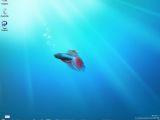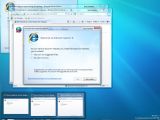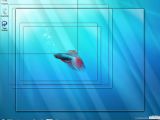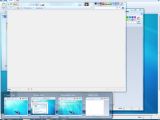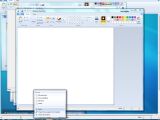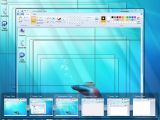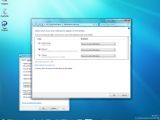The Superbar is the heart and soul of Windows 7's shell evolution. Aero vNext, synonymous with the introduction of the next iteration of the Windows client, brings to the table, even as early as Beta Build 7000, the most consistent redesign of the Windows graphical user interface since the debut of Windows, through the overhauled Taskbar. And in a sense, as Chaitanya Sareen, a senior program manager for Microsoft, revealed, Windows 7's GUI was taken all the way back to the origins of the operating system, adapting shell elements from Windows 1.0.
Whether it comes down to launching applications or administering opened programs and windows, Windows 7 takes the level of control and management users have over the desktop to the next level, and this is an understatement. Microsoft is by no means reinventing the GUI wheel, but with the advent of Windows 7' Superbar the company is perfecting it, delivering the Sistine Chapel of Windows shells. In this context, consolidation is the strategy Microsoft went for when integrating functionality ranging from Quick Launch, to dealing with recently-opened documents, to domesticating the notification area, differentiating between icons and shortcuts, and running application windows into the new Taskbar. Even as early as the feature-complete Beta Build 7000, Windows 7 Superbar's mechanism delivers an equilibrium between application-launching and window-switching to a level unachieved by any previous versions of Windows.
The Start Button
In Windows 7, Microsoft has tweaked the appearance of the Windows Start button in order to visually align it with the rest of the default icons on the Superbar. No longer cut from the rest of the Taskbar items by the Quick Launch programs area, the Start button is now closely integrated with the rest of the icons sitting at the bottom (or at an edge) of the screen. One detail that Windows 7 users will notice immediately is the elaborate light effect that has been introduced for the sphere, a complex halo of nuances of light that comes to life as the mouse hovers over the button.
Icons
Microsoft has chosen text-less, large icons as the default for the Superbar. The choice is interesting enough because it speaks of the Redmond giant's confidence that users will be able to seamlessly and quickly identify the specific item they are looking for from a plethora of applications, active or inactive, and opened windows. On the Windows 7 Taskbar, items that are running share the real estate space with programs that are not running. Microsoft has implemented a subtle icon edge effect that becomes visible for running applications, while programs that are not running feature just plain vanilla icons.
The border, or outline, or glass-emboss effect is more than sufficient to visually separate Windows 7 running apps from just Superbar icons. It manages to separate applications with a single opened window from those with multiple opened windows, even when users are not interacting with the Taskbar, while attributing different colors to launched items correlating the detail with mouse over triggers via Color Hot-track. The icons are also capable of indicating the progress of a specific task, such as the download of a file, or a copying process via the bundling of a progress bar in the background of the icons. At the same time, the company has kept the yellow-orange coloration effect for running apps that are trying to attract users' attention.
Show Desktop
The Show Desktop button has been extirpated from the Quick Launch area and moved all the way to the end of the Superbar, past the Notifications area. Just hovering the mouse over the button will transform all the opened windows on the desktop into glass and let the user see the background through the transparency effect. Actually clicking Show Desktop will minimize all applications and windows if they occupy desktop real estate space, or maximize them if they are minimized.
Adding Superbar Items
Adding Superbar items is a task that users will find very intuitive. The simplest way to add applications to the Taskbar is to click, drag and drop their icons onto the taskband. In addition, right-clicking icons in the Start Menu for example will offer the possibility to pin specific items to the Taskbar.
Superbar Thumbnails
In contrast to Windows Vista, users will find that in Windows 7 thumbnails for Superbar items are now fully interactive and grouped. New instances of an opened application will not add new icons to the Taskbar, but instead new thumbnails as an extension of the single master button for that specific app. The grouped thumbnails will permit users to easily navigate all running instances of an application and quickly identify the one instance they are looking for.
But this is not all. While enabling users to interact with thumbnails, Windows 7 also supports mini-toolbars for some preview windows. In this context, users will be able to close and have basic control over an app, such as stopping a song that is playing in Windows Media Player, by interacting with the thumbnail alone, and not with the actual application.
Aero Peek
Aero Peek is a feature that works in conjunction with the interactive Superbar thumbnails. When hovering the mouse over the thumbnails illustrating the opened instances of a specific application, the windows corresponding to the previews will be brought to the foreground on the desktop with their actual content, in real size and keeping their actual locations, while the reaming windows become transparent.
Mini-Start Menus - Jumplists
Contextual menus for Taskbar icons are gone in Windows 7. Right-clicking an icon will cause a mini-Start menu to pop up. Jumplists allow users to close a window, unpin a program from the Taskbar, open a new instance, or access the most recent destinations.
Notification Area
The Windows 7 Notification area now offers a higher degree of control when it comes down to customizing its behavior, alerts, and the icons that are displayed. The promise from Microsoft is that users will be able to tone down the nagging volume of the notifications and streamline the management of alerts.
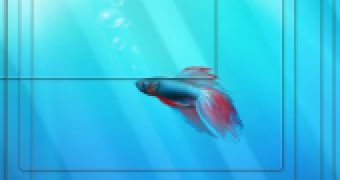
 14 DAY TRIAL //
14 DAY TRIAL // 
